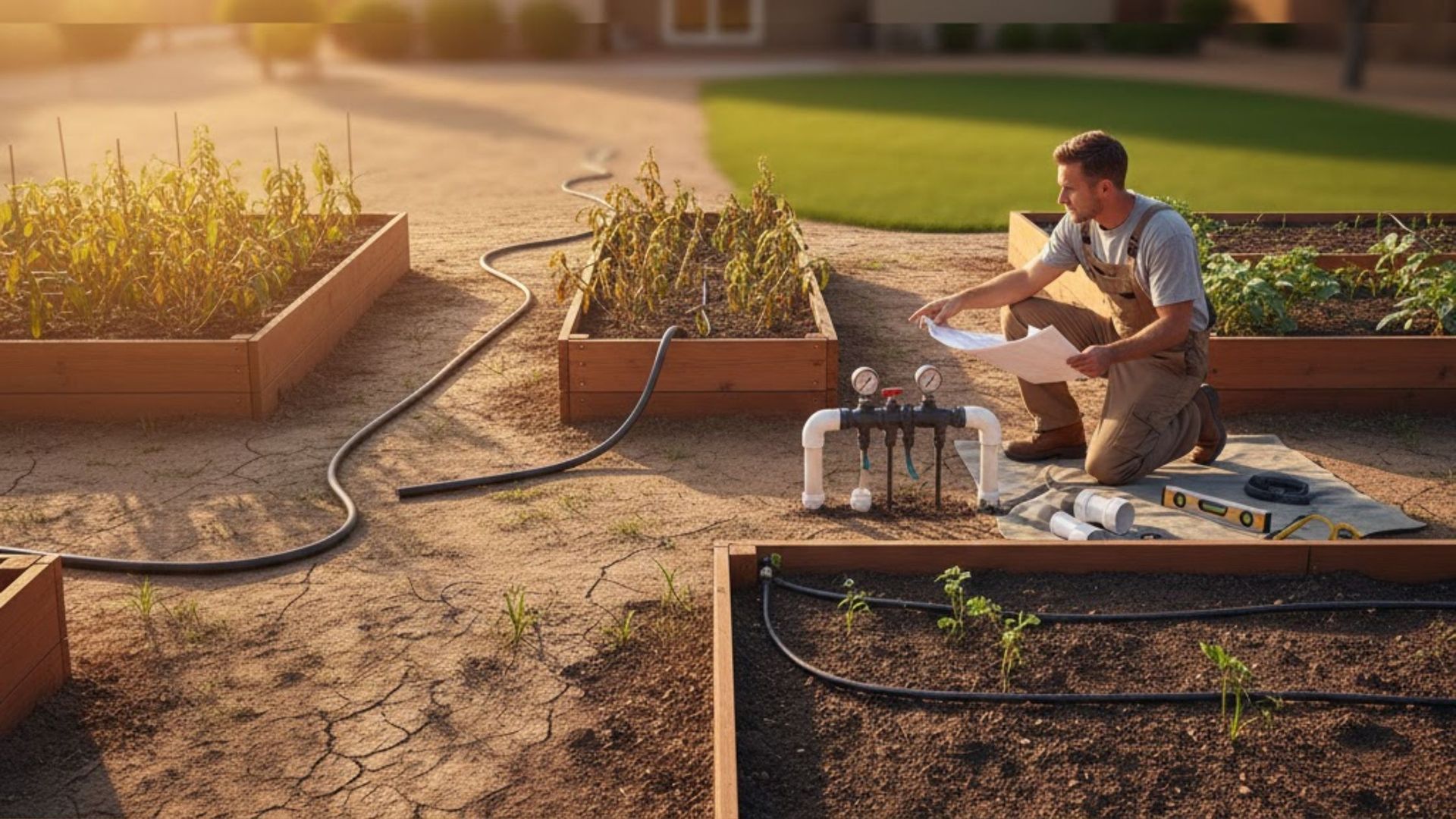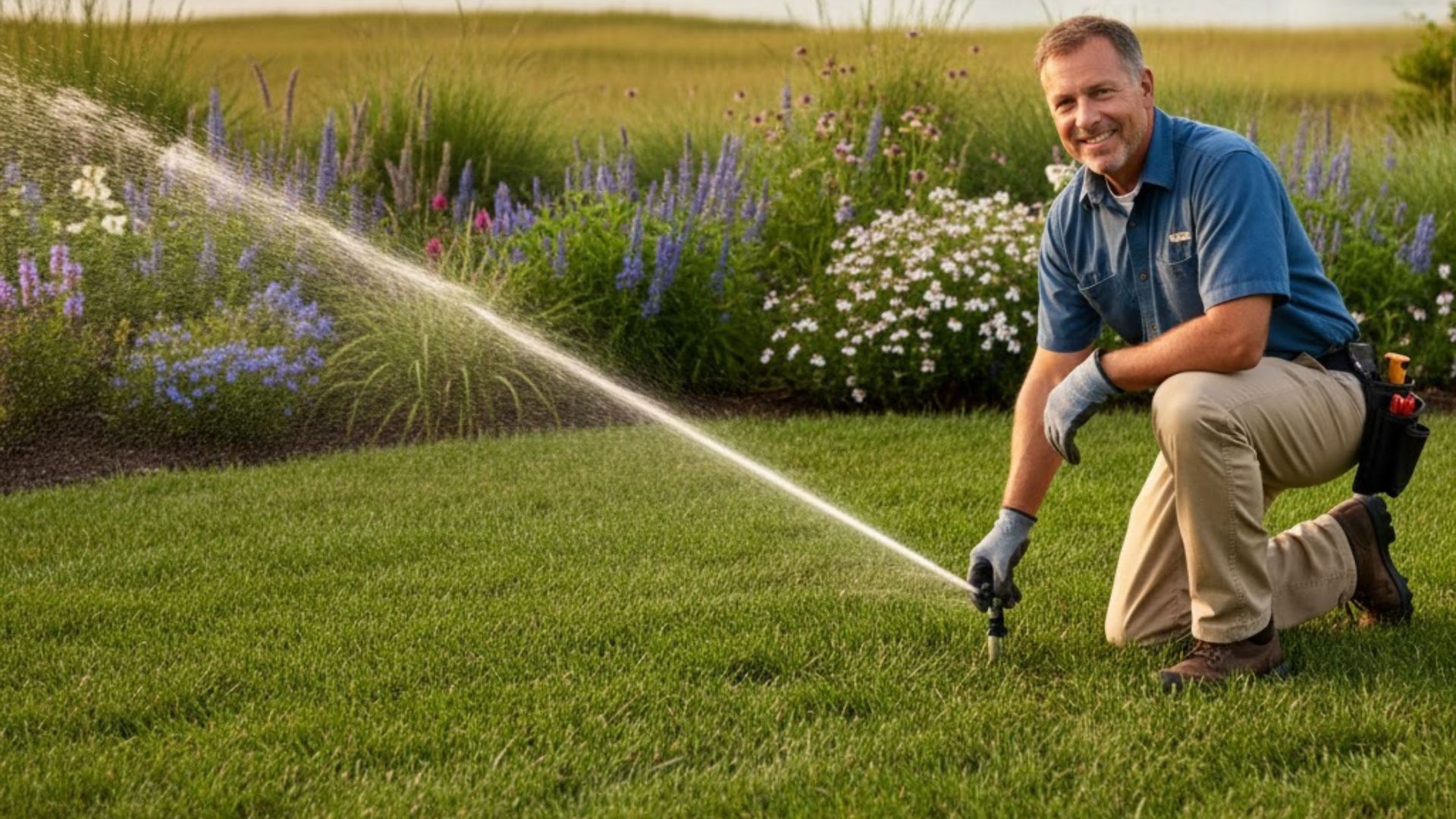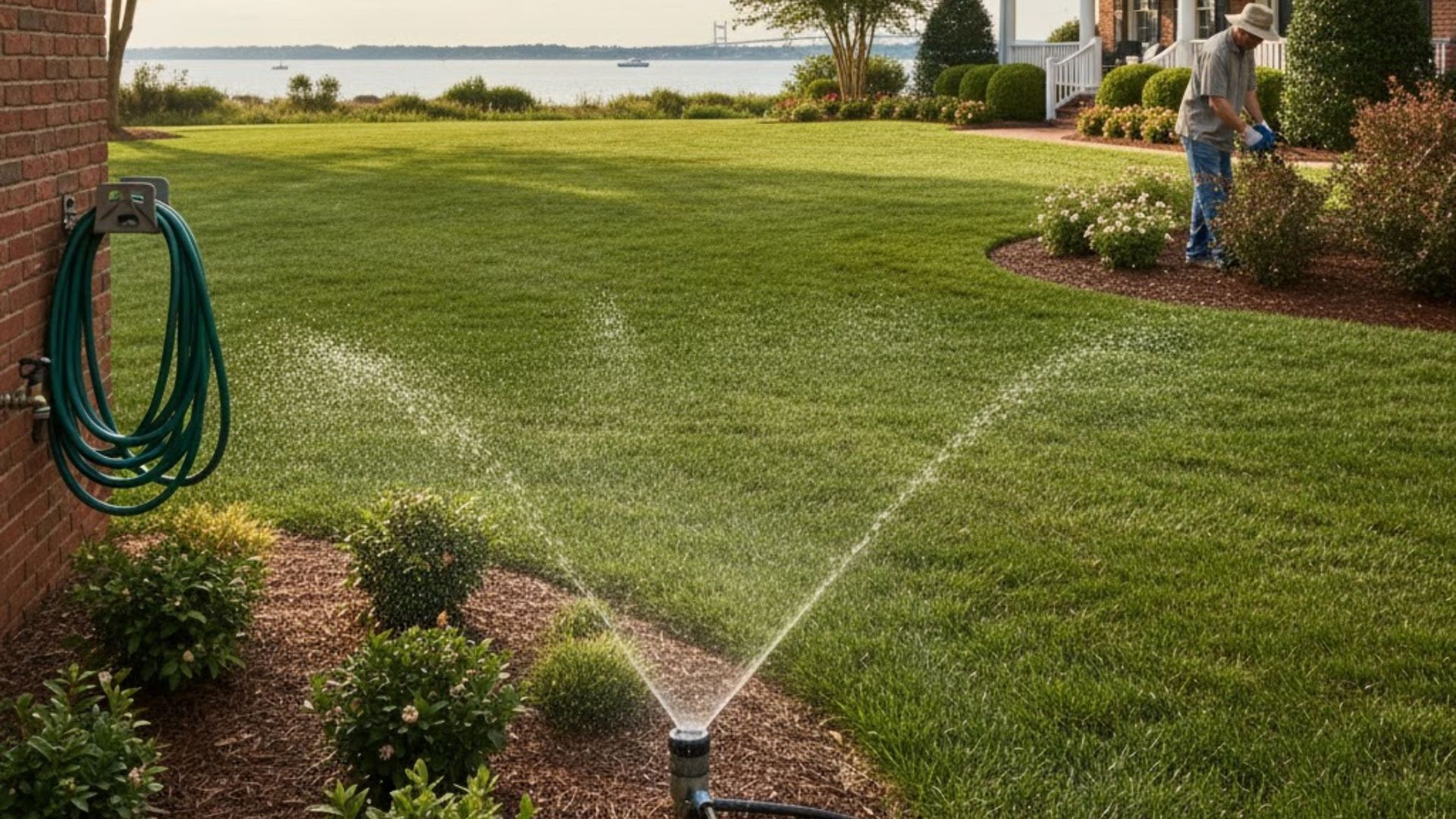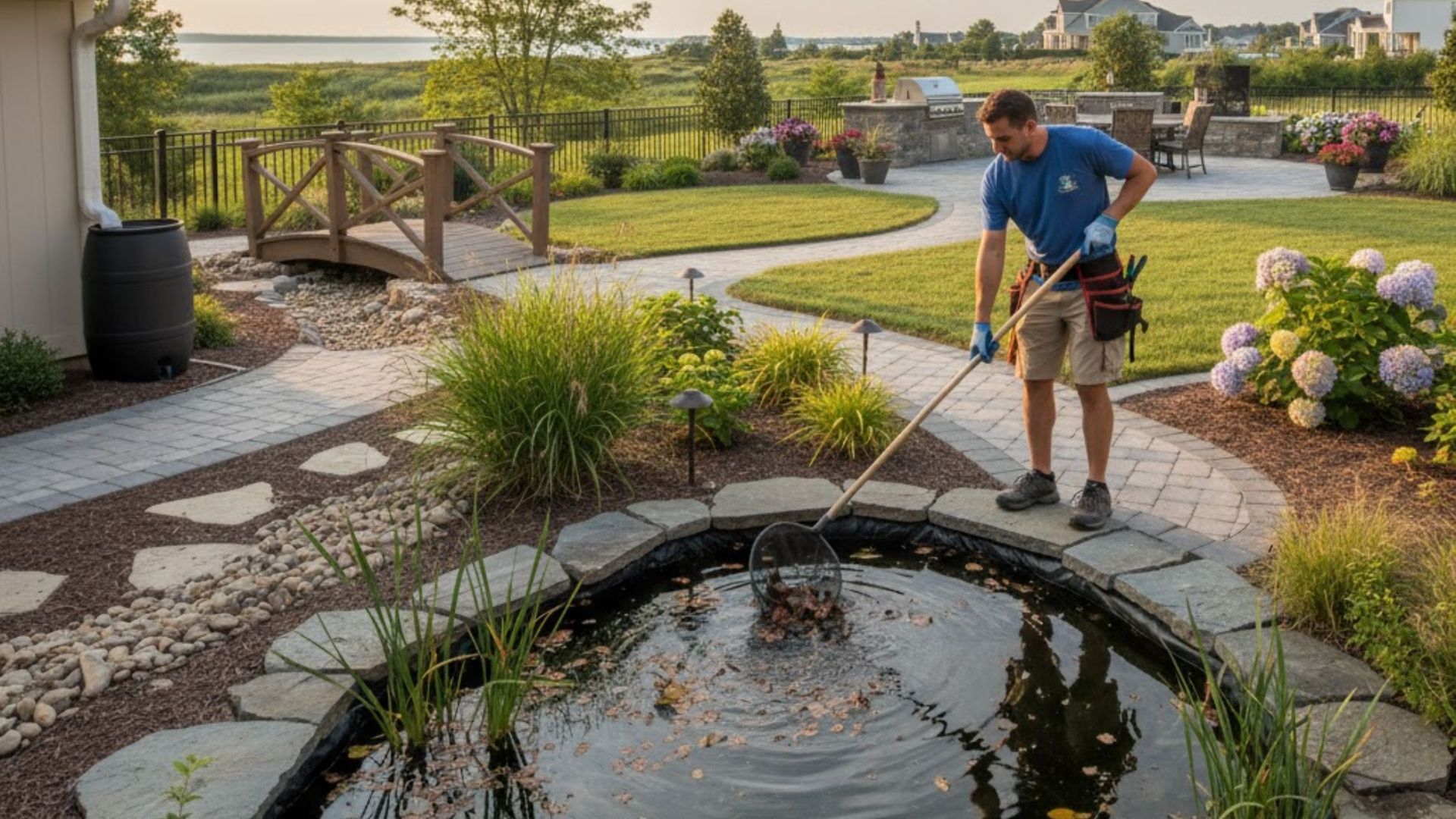Top Watering Mistakes Hampton Roads Homeowners Make (and How a Landscape Handyman Can Fix Them)
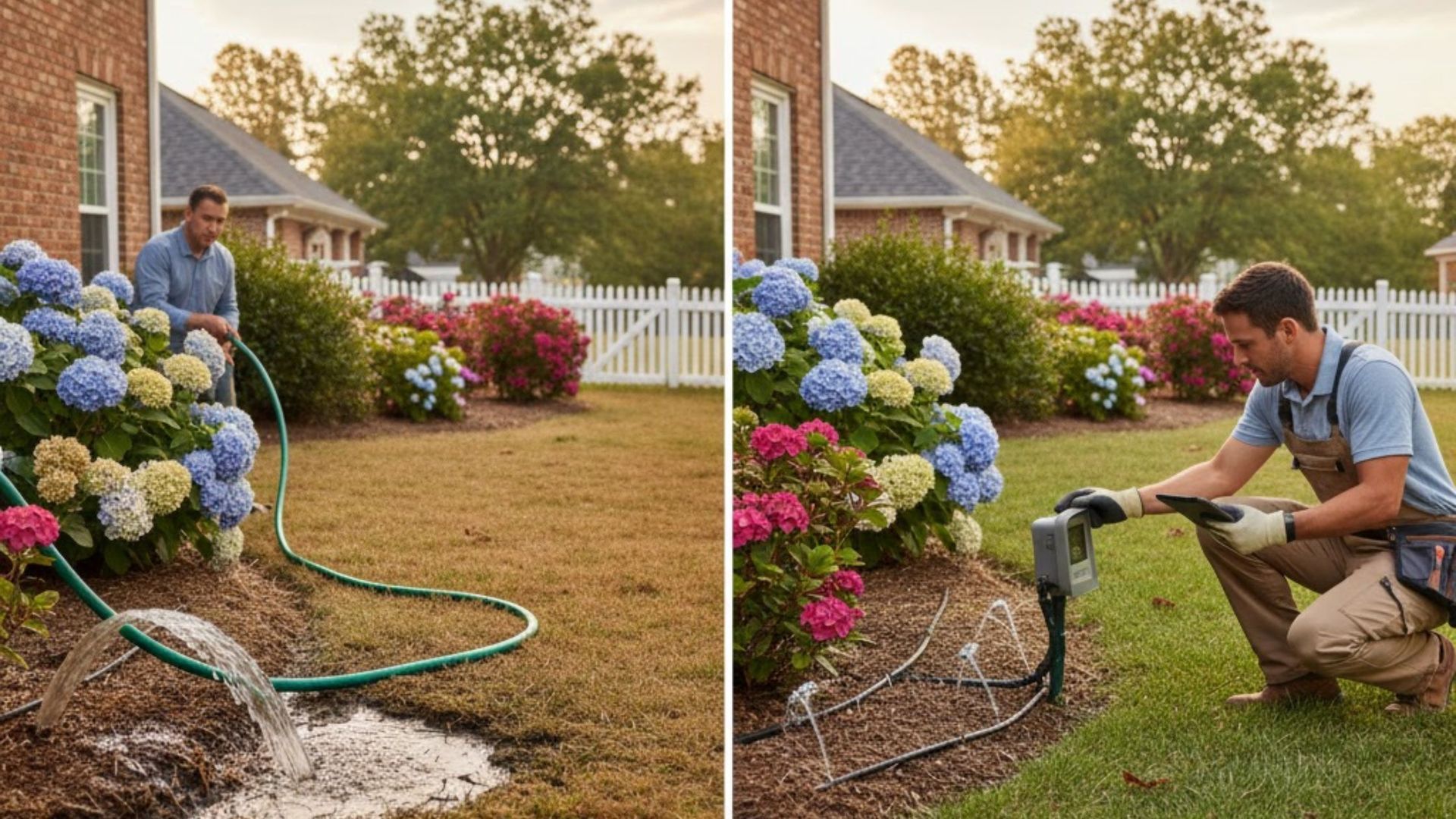
Does your lawn in Chesapeake, Virginia Beach, or Norfolk often look stressed, patchy, or less vibrant than your neighbors', even though you feel like you water it constantly? The truth is, maintaining a healthy, lush lawn in the unique coastal climate of Hampton Roads requires more than just turning on the spigot. In fact, many common watering habits—performed with the best of intentions—are actually suffocating grass roots, encouraging disease, and wasting significant amounts of water and money. Homeowners across the region frequently struggle with issues like shallow watering, poor timing, and misaligned sprinkler systems that lead to wasted resources and frustrating results. Fortunately, you don’t have to struggle alone; a professional Landscape Handyman Water Services provider can assess your property’s specific needs and implement simple adjustments that make a huge difference, ensuring your turf stays green and resilient through the hot Virginia summers.
What is the ideal watering schedule for warm and cool-season grasses in the Tidewater area?
The ideal watering schedule in the Tidewater area, which includes cities like Hampton, Newport News, and Suffolk, is defined by depth and infrequency, regardless of whether you have cool-season fescue or warm-season Bermuda grass. You should aim to apply about one to one and a half inches of water per week, making sure the water penetrates six to eight inches deep into the soil. This deep watering promotes robust, drought-resistant root systems that can survive the heat. Instead of daily light sprinkling, which encourages shallow root growth, it is much better to water two to three times per week, allowing the top layer of soil to dry out slightly in between sessions. Landscape Handyman Water Services can help you determine the precise run times for your specific irrigation system to achieve this crucial depth without runoff.
The Problem of Shallow, Frequent Watering
The single most destructive mistake homeowners make is watering for a short period—say, ten or fifteen minutes—every single day. This is known as shallow watering. While it makes the surface look moist, the water never sinks far enough to encourage deep root growth. Your lawn’s roots become lazy, staying near the surface where the water is readily available, making them highly susceptible to heat stress and drought when the weather gets hot.
Shallow roots lead to a dependence on daily watering, creating a vicious cycle where the lawn rapidly wilts in the afternoon heat. This practice also creates a perpetually moist environment on the soil surface, which is the perfect breeding ground for fungal diseases like brown patch and dollar spot, conditions common in the humid Hampton Roads climate. Transitioning to a deep and infrequent schedule is the foundation of a resilient lawn.
The Importance of Watering Time
Beyond how long you water, when you water is equally important for plant health and resource conservation. The best time to irrigate in Virginia is early in the morning, ideally between 4:00 AM and 9:00 AM. Watering during this window ensures that the water is absorbed before the sun's intensity causes high evaporation rates, maximizing the amount of moisture that reaches the root zone.
Furthermore, early morning watering allows the grass blades to dry quickly as the day warms up. Conversely, watering in the late afternoon or evening is strongly discouraged. When grass blades remain wet throughout the cool nighttime hours, it creates an ideal environment for moisture-loving lawn diseases and mold to take hold. This simple scheduling adjustment can drastically improve your lawn’s resistance to pathogen issues.
Are You Drowning Your Lawn? Understanding Over-Watering
Many homeowners believe that if a little water is good, more water must be better, but excessive hydration can be just as damaging as a drought. The heavy clay content found in many Tidewater soils, especially around areas like Chesapeake and Virginia Beach, means that the ground often retains water longer than sandy soil. When you apply too much water too frequently, the roots can literally drown due to a lack of necessary oxygen in the soil.
Over-watering can be identified by a few telltale signs in your yard. If you step on your lawn and the ground feels squishy or you leave a wet footprint that doesn’t disappear quickly, the soil is saturated. Excessive moisture can also lead to nutrient leaching, washing essential minerals like nitrogen and potassium below the root zone where the grass can no longer access them, resulting in pale, unhealthy turf.
Common Indicators of Waterlogging
- Mushy Soil: The ground feels spongy or soft to the touch, often remaining wet for days after irrigation.
- Algae and Moss: The presence of surface algae or moss indicates persistent saturation and poor drainage.
- Foul Odor: In severe cases, overly wet, stagnant soil can develop a sour or rotten smell due to anaerobic conditions.
- Yellowing Grass (Chlorosis): When roots are suffocated by too much water, they cannot properly take up nutrients, causing the leaves to turn yellow.
Correcting an over-watering issue often starts with a system audit, which can be easily performed by a professional from HR Irrigation. They can adjust your controller's run times and investigate potential irrigation issues like a leaky valve or a stuck-open zone that is contributing to the problem.
How Can I Tell If My Lawn Needs Water in Hampton Roads?
Instead of relying on a rigid, automated schedule, the healthiest approach to irrigation is to water on demand based on the actual needs of your grass and the specific conditions of your Virginia landscape. Relying solely on a timer, especially during periods of heavy rainfall, is a surefire way to over-water. The key is to look for specific visual cues and conduct simple soil tests to gauge moisture levels.
Visual and Physical Tests for Soil Moisture
- The Footprint Test: A healthy, well-hydrated lawn is resilient. If you walk across the turf and your footprints remain visible for an extended period, it means the grass blades lack the turgidity (firmness) of proper hydration and are experiencing stress. A happy lawn will spring back up quickly.
- The Color Test: Before the grass turns completely brown, it often develops a subtle blue-gray tint. This is a subtle yet crucial early warning sign of drought stress.
- The Screwdriver Test: Push a long screwdriver or a soil probe into the lawn. If the soil is moist, the tool should slide into the ground relatively easily for six to eight inches. If you have to strain to push it in even a few inches, the soil is likely too dry and needs immediate deep watering.
Monitoring these signs allows you to fine-tune your lawn watering troubleshooting Hampton Roads strategy and ensure that you are only supplementing when natural rainfall has been insufficient. Remember that different parts of your property, such as shaded areas, require significantly less water than sections exposed to full afternoon sun.
Common Irrigation System Adjustments and Efficiency Issues
Even if your timing and duration are perfect, an inefficient or damaged irrigation system will still fail to deliver the intended amount of water evenly, leading to dry patches, wasted water, and high utility bills. Poor sprinkler efficiency is a rampant problem across the Hampton Roads region. This is where a Landscape Handyman Water Services expert truly adds value, specializing in diagnostics and precision repair.
Misaligned and Mismatched Sprinkler Heads
One of the most visually obvious problems is overspray. Are your sprinkler heads aiming at the pavement, driveway, or sidewalk instead of the actual lawn or garden beds? Overspray is pure waste, directing hundreds of gallons of treated water into the sewer system. This is often the result of minor bumps or shifts in the soil over time.
A less obvious, yet highly damaging, mistake is mixing different types of sprinkler heads within the same irrigation zone (also known as a hydro-zone). Rotor heads and spray heads distribute water at vastly different rates. When used together in one area, the grass near the spray heads will be severely over-watered, while the turf near the rotor heads will likely be under-watered, leading to inconsistent growth and turf health. A qualified professional can quickly fix and recalibrate your system. If you need reliable help with precise adjustments, consider reaching out to HR Irrigation.
Broken Components and Leaks
A small, unaddressed leak in a valve or a cracked lateral line can waste thousands of gallons of water over a season, often unseen, as the water saturates the soil underground. Similarly, a broken or malfunctioning rain sensor—which is designed to override the system timer when significant precipitation has occurred—will cause the sprinklers to run during rainstorms, contributing to over-watering.
A comprehensive annual maintenance check, often performed as part of a sprinkler efficiency handyman Hampton Roads service, should include:
- Pressure Check: Ensuring the water pressure is optimal for the sprinkler heads in each zone.
- Nozzle Inspection: Checking for clogged, damaged, or mismatched nozzles.
- Sensor Functionality: Testing the rain sensor or soil moisture sensor to ensure it communicates correctly with the controller.
- Leak Detection: Visually and physically inspecting lines and connections for signs of water loss.
Regular inspections are the best way to prevent small issues from becoming expensive repairs or causing catastrophic turf damage. You can read our reviews to see how we help homeowners address these critical repair issues.
The Landscaped Ecosystem: Different Plants, Different Needs
The landscaping around a home is an ecosystem, not a homogenous block of turf. A major mistake is treating all plants the same, often by installing all zones on the same irrigation schedule. For instance, shrubs, trees, and groundcovers have wildly different root structures and hydration needs compared to turfgrass. Trees, once established, generally require deep, infrequent soaking to encourage deep structural roots, while annual flowers may need more frequent, lighter watering.
Specialized Watering for Landscape Beds
Dedicated landscape beds containing trees, shrubs, and perennials should ideally be managed separately from the lawn. Drip irrigation or soaker hoses are far superior to standard sprinklers for these areas. They deliver water directly to the root zone, minimize evaporation, and keep the foliage dry, which dramatically reduces the risk of foliar disease.
If you are using sprinklers in landscape beds, the run time and frequency need to be adjusted carefully. Shrubs typically have a larger root ball and require a deeper soak less often than grass. Over-watering ornamental shrubs can lead to root rot, causing the plant to decline slowly and seemingly mysteriously, often months after the damage is done. Regular garden water system adjustments Hampton Roads are critical to maintaining the health of your entire property, not just the grass.
Advanced Watering Technology: Smart Controllers and Sensors
In an era of rising utility costs and increasing environmental awareness, relying on outdated irrigation controllers is a financial mistake. Modern, smart irrigation controllers use advanced technology to take the guesswork out of watering and provide precise control that is impossible with a standard clock timer.
How Smart Controllers Improve Efficiency
Smart controllers use Wi-Fi connectivity to access real-time local weather data, including precipitation, temperature, and wind speed. This is known as evapotranspiration (ET) scheduling. Instead of running on a fixed Monday/Thursday schedule, the system automatically adjusts based on how much moisture the air and plants have actually lost since the last watering.
This technology can result in significant water savings, often reducing water consumption by 30% or more over a typical season. For homeowners in the Hampton Roads area facing periodic water restrictions or simply looking to save money, this technology is a highly valuable investment. A trusted Landscape Handyman Water Services provider can install, program, and calibrate these systems for maximum effect.
Seasonal Irrigation Needs in Virginia
The needs of your lawn change drastically between the cool, wet spring and the hot, often dry, peak of summer, and then again into the cooler fall. Failing to adjust your irrigation schedule seasonally is another major error, resulting in over-watering in spring and under-watering in summer.
Spring and Fall Adjustments
During the spring, when temperatures are moderate and the lawn is actively growing, natural rainfall often provides sufficient moisture. If you continue with a summer schedule, you will rapidly oversaturate the soil, potentially drowning new growth and creating a prime environment for disease. As temperatures drop in the fall, you should gradually reduce the frequency of watering. A deep soak in the late fall, before winterization, helps to prep the roots for dormancy.
Summer Heat Management
Summer is the most critical time for proper irrigation. When the heat index soars, especially during July and August in Virginia, even a well-watered lawn can show signs of stress. In extreme heat, you may need to increase the volume of water slightly or add a brief, midday "syringing" session. Syringing involves a very quick, five-minute sprinkle just to cool the leaf blades and prevent heat-related dormancy—it is not intended to water the roots.
Proper summer lawn care also involves mowing practices, as taller grass shades the roots and reduces moisture loss. Set your mower blades to the highest setting, typically three and a half to four inches, to provide natural cooling and conservation. Remember that the dedicated team at HR Irrigation is here to provide exceptional services.
Preparing for Winter and Spring Startup
Neglecting to properly prepare your irrigation system for the changing seasons can lead to costly damage, especially the risk of freezing pipes during the few cold snaps that Hampton Roads experiences. Every fall, before the first hard freeze, the system must be winterized, and every spring, it must be carefully activated.
The Winterization Process
Winterization involves clearing all the water from the irrigation lines, valves, and components using compressed air—a process known as a "blow out." If water remains in the pipes, it can freeze, expand, and crack the PVC pipe or damage the expensive backflow prevention device. This is specialized work that should always be handled by a professional to prevent damage to the system.
Spring Commissioning
In the spring, usually around April or early May when soil temperatures rise, the system needs to be carefully started up. This involves slowly repressurizing the lines, checking the backflow device, and thoroughly inspecting every zone for damage that may have occurred over the winter. This is the ideal time for HR Irrigation to perform a system audit and make all necessary seasonal adjustments to the controller.
The spring startup check is also the perfect opportunity to address any minor leaks or misalignments that were created by winter ground settling. Catching these small issues early ensures optimal efficiency before the intense summer watering begins.
Correcting Poor Lawn Conditions Due to Past Mistakes
If your lawn is already suffering from brown patches, thin growth, or excessive moss due to previous watering errors, simply changing the schedule may not be enough. You may need specific remediation steps to help the turf recover its health and density.
Aeration and Overseeding
Compacted soil, often resulting from over-watering or heavy foot traffic, prevents water and oxygen from reaching the roots, leading to a host of problems. Aerating the lawn—pulling small plugs of soil out—helps break up this compaction. This is an essential practice in the clay-heavy soils of the Tidewater region.
Following aeration, overseeding with a high-quality, regionally appropriate blend of tall fescue or perennial ryegrass is highly effective. The seeds fall into the aeration holes, ensuring excellent soil-to-seed contact, and the newly established grass will benefit from your newly corrected, deep-and-infrequent watering routine.
Adjusting Landscape Grading
In some cases, the issue may not be the irrigation system but poor landscape drainage or grading. If water pools consistently in one area of your yard, it indicates that the ground slopes incorrectly or that the soil is simply too compacted and heavy to drain properly. A Landscape Handyman Water Services expert can recommend solutions ranging from installing French drains to minor regrading that ensures surface water is routed away from the foundation and excessive pooling areas. If you are struggling with a constantly wet yard, take a look at our services and see how we can help.
Frequently Asked Questions (FAQs) About Watering
Addressing common questions from homeowners in the Hampton Roads area can further clarify the best practices for residential watering.
1. How long should I run my sprinkler system to get one inch of water?
The time it takes to apply one inch of water varies significantly based on your system’s water pressure, nozzle type, and zone size. A general estimate for a typical residential spray head is between 20 to 30 minutes, but for a rotor head, it could be 45 to 60 minutes or longer. The best way to know for sure is to perform a simple catch-can test: place several flat-bottom containers (like tuna cans) across the lawn, run the system for 30 minutes, and measure the average water depth. You can then extrapolate the time needed to reach one inch.
2. Can I use the same sprinkler schedule for my sunny and shady lawn areas?
No, you should never use the same schedule. Areas of your lawn that are in full shade, particularly in the hot afternoon, lose moisture far more slowly through evaporation and transpiration than sections that are exposed to full sun all day. Shaded zones will almost always require less frequent watering to prevent the development of moss, algae, and fungal diseases. A professional can easily program separate watering zones to account for these differing light conditions.
3. What is a backflow device, and why do I need it maintained in Virginia?
A backflow prevention device is a crucial piece of equipment required by local regulations in Virginia. Its primary function is to prevent contaminated water from your irrigation system (which sits underground) from being siphoned backward into your home's main potable water supply. These devices must be tested annually by a licensed professional to ensure they are functioning correctly and complying with local health codes.
4. How can I tell if a brown patch in my lawn is due to heat stress or disease?
While both heat stress and certain diseases can cause brown patches, there are key differences. Patches caused by general drought stress typically affect the highest points of the lawn first and appear uniform in color. Conversely, many common lawn diseases, such as Brown Patch (a common occurrence in the hot, humid summer nights of the Tidewater region), often display a “smoke ring” or darker border around the edge of the patch in the early morning. If you suspect disease, a proper diagnosis and treatment is necessary, in addition to adjusting the watering routine.
5. Is it ever acceptable to water during the heat of the day?
While routine, deep watering during midday is highly inefficient due to rapid evaporation, a brief, light watering (called syringing) can be beneficial on extremely hot days. A quick 5-minute spritz in the early afternoon serves only to cool the grass blades and lower the canopy temperature, providing immediate relief from heat stress without significantly contributing to the soil moisture level. This should be an emergency measure, not a regular schedule.
Partnering with a Local Expert for Lasting Lawn Health
Achieving a truly healthy, emerald-green lawn in the diverse landscape of the Hampton Roads area is more about precision than volume. Moving past the common missteps of shallow watering, poor timing, and neglecting system maintenance is the fastest way to conserve water and grow a lawn that stands up to the Virginia climate. Whether you need a simple rain sensor replaced, complex zone adjustments for optimal garden water system adjustments Hampton Roads, or a full system audit for maximum sprinkler efficiency handyman Hampton Roads, professional help is essential.
Our team at HR Irrigation specializes in optimizing residential watering systems to be as efficient and effective as possible. We understand the specific soil composition, grass types, and microclimates unique to this coastal region. We are committed to providing you with the expertise needed to transition from wasteful, damaging watering habits to a precision system that delivers water exactly where and when it is needed. Don't let common mistakes frustrate your efforts any longer; let a dedicated Landscape Handyman Water Services specialist implement the solution and ensure your property thrives year-round.
If you are ready to stop wasting time and money and start enjoying a noticeably healthier lawn, please contact us today. We’re eager to show you how a professionally maintained and optimized irrigation system can transform your outdoor living space.
